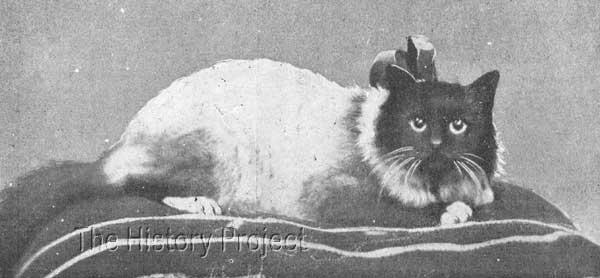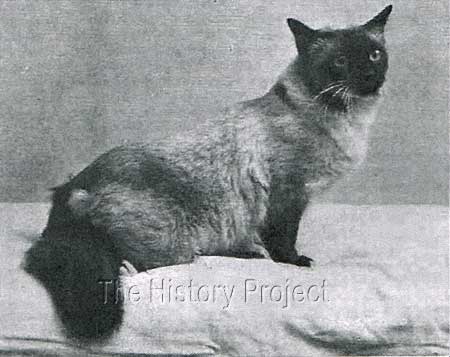BIRMAN CAT ORIGIN
The Birman is a domestic cat breed. Also known as “Sacred Cat of Burma” (particularly so in some languages), it is not to be confused with the Burmese (cat), which is a separate and dissimilar breed. The Birman has a pale coloured body and darker points with deep blue eyes. The Birman breed is recognized by the Cat Fanciers’ Association (CFA)
The Birman cat is thought to have come from Burma, where Kittah priests revered it as a sacred companion cat. The Birmans' present colouring was developed according to a narrative, which has been repeated in many forms: Originally, long-haired white cats with yellow eyes served as the Temple of LaoTsun's protectors. Tsun-Kyan-Kse, the temple's golden deity, with piercing blue eyes.

A lovely cat named Sinh served as the companion of the head priest, Mun-Ha. Mun-Ha was slain during a raid on the temple. Sinh rested his foot on his master as as he passed away.The cat's white fur took on a golden hue; his eyes changed to a goddess-like blue; and his face, legs, and tail took on an earthy hue. But where his paws touched the priest, they remained white as a sign of innocence. The colors of the other temple cats changed to match. After dying seven days later, Sinh carried Mun-Ha's spirit to heaven.
ARRIVAL IN FRANCE

The Birman's more recent past is almost as obscure as its fabled beginnings. There is no doubt that the breed first appeared in France around 1920. According to one legend, a pair of Birman cats were smuggled from Burma to France sometime around 1919. The female cat, Sita, made it through the difficult journey and was joyfully pregnant, but the male cat did not.
A perhaps distinct version claims that while American millionaire Mr. Vanderbilt was traveling in the Far East, two cats, a male and a female (whose name was Sita), were abducted and delivered to Vanderbilt by a disloyal servant of the temple of Lao-Tsun. The duo was reportedly thereafter handed to a woman by the name of Mme Thadde Hadisch.The male (again, according to this version) perished on the boat, but the expectant female gave birth to a litter of kittens in the French town of Nice in 1920. One of the daughters was magnificent, and she was given the name Poupee. A Laotian Lynx and Poupee were bred.
This was corroborated by top Birman breeder Baudoin-Crevoisier, who wrote in a 1933 article, "Poupee could not have been mated by a male of that breed, but was bred to a Laotian Lynx cat belonging to a doctor in Nice. With extremely blue eyes that resemble Siamese cats, this species of cat gave birth to young Birman and Laotian mongrels. Manou de Madalpour, whose markings are excellent as a result of repeated breeding She resembles Poupee, her mother. Afterward, Baudion wrote in 1935,This female was then bred to a male Siamese, who at that time was given the name "Laotian Cat" due to the circumstances. Marcel Reney wrote to M. Prat, a physician in Nice, in 1933 in an effort to solve this mystery. We have definitely had a number of Siamese cats, but we are unaware of their ancestry, he replied. Regarding Mme Hadisch from Vienna, I know nothing.
FIRST CROSS BREEDING
In order to get his opinion on the "Lynx cat of Laos," Marcel Reney also wrote to M. Guy Cheminaud, a hunter from the Far East who lived in Laos and whose books on hunting of feral animals were renowned. There are no Laotian cats that are separate from Siamese cats, he retorted.
Because the most important witness, the owner of the fabled "Laotian Cat," was unaware of either the lynx cat or Mme Thadde Hadisch, Jumand and Baudoin's entire timeline collapsed. Mmme Marcelle Adams, the owner of Manou de Madalpour, swore to Marcel Reney that a certain Mme Leotardi had told the story as Jumand and Baudoin recorded it before mysteriously disappearing.

Apart from the writings of Sir Russell Gordon and Auguste Pavie, no source provides the precise origin of these cats, according to Baudoin in 1935's "Son Altesse le Chat," which was published after Marcel Reney's essay in "Chasse, Peche, Elevage" in 1933 seeking new information. The Sacred Cat Of Burma is still a mystery even after six years of study and ten years of breeding offspring there.